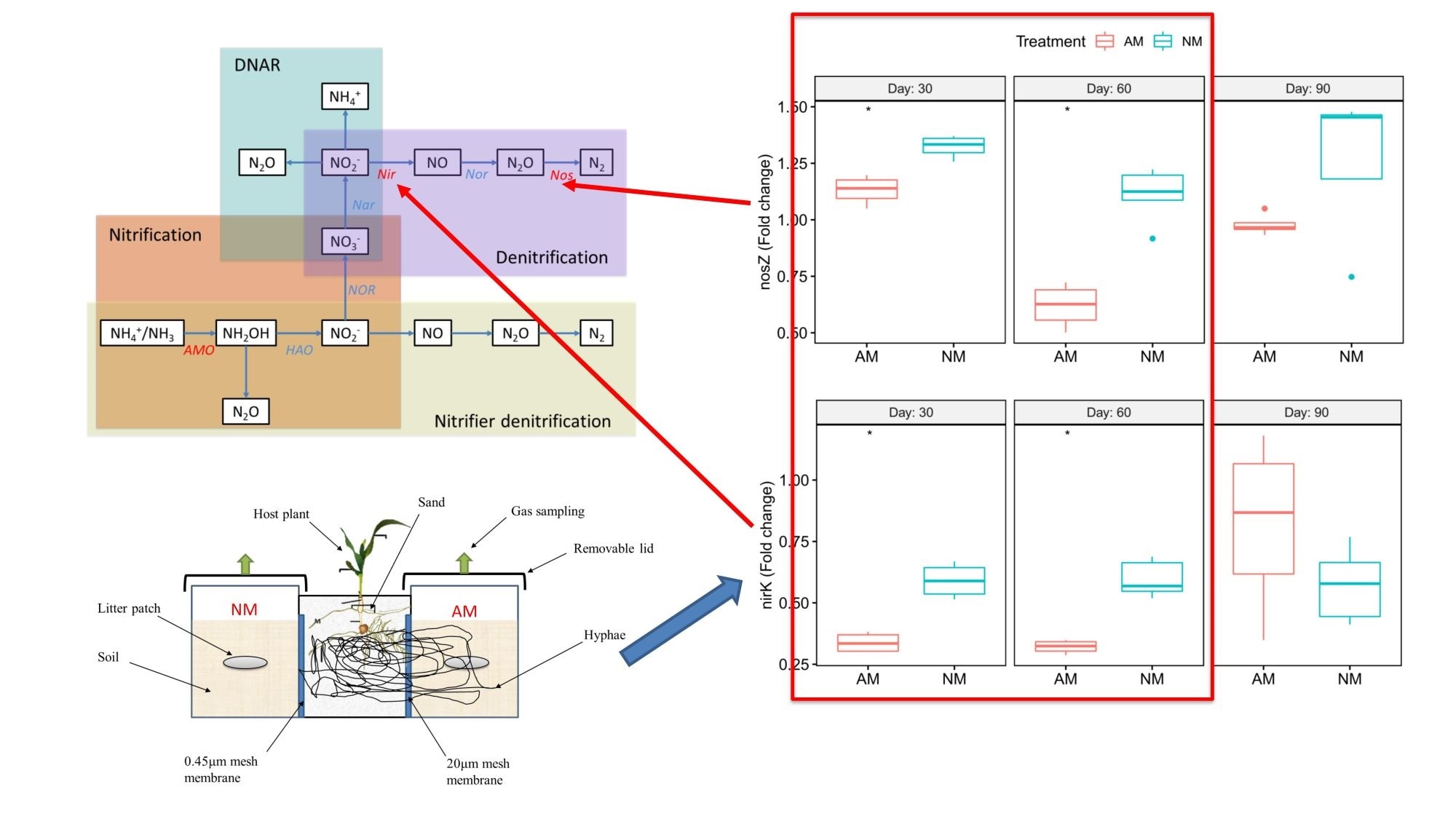One of the most significant greenhouse gases that cause global warming is nitrous oxide (N2O). Simultaneously, this gas is also involved in several photochemical reactions in the atmosphere, damaging the ozone layer in the atmosphere. Soil is a significant source of N2O emissions in terrestrial ecosystems.

Graphical abstract of general design and major findings of this research. Image Credit: Kunming Institute of Botany.
Within the soil, the N2O largely comes from the conversion of the available nitrogen mediated by numerous microbes. In terrestrial environments, Arbuscular mycorrhizal (AM) fungus is a broadly distributed soil fungus that can improve the absorption of nutrients by the host plant via its hyphae network, enhance the stress tolerance of the host plant, and improve the chemical and physical characteristics of the soil.
A general assumption is that AM fungi themselves lack a saprophyte ability and are less likely to be direct consumers or producers of N2O, but they are capable of absorbing active soil nitrogen and communicate with other microorganisms in the soil to impact the production of N2O from the soil.
To better analyze how the AM fungi control the production as well as the emission of N2O from the soil, scientists from the Kunming Institute of Botany of the Chinese Academy of Sciences (KIB/CAS), on the basis of indoor studies, organized a microcosm experiment in a regulated environment to resolve this knowledge gap.
Two different soil environments were determined in this experiment. These soil environments either prevented (NM) or allowed (AM) access by AMF hyphae. Factors, like N2O flux, soil physicochemical properties, the diversity of crucial genes responsible for producing N2O, and the diversity of bacterial populations, were evaluated in both sets of treatments over a period of three months.
The outcomes demonstrated that in the first month, the presence of AMF considerably reduced the emissions of N2O from agricultural soils, and the abundance of crucial genes responsible for denitrification considerably reduced in AM treatments, suggesting that the regulation of N2O emissions is spread by AMF-induced variations in the denitrification process.
A structural equation model also demonstrated that AMF had an indirect impact on N2O emission by modifying the abundance of genes related to N-metabolism, rather than by modifying the diversity of bacterial populations or soil chemical properties.
The study, therefore, suggested a potential mechanism through which AMF can control denitrification activities and thus N2O emissions from agricultural soils.
Source:
Journal reference:
Gui, H., et al. (2021) Arbuscular mycorrhizal fungi potentially regulate N2O emissions from agricultural soils via altered expression of denitrification genes. Science of The Total Environment. doi.org/10.1016/j.scitotenv.2021.145133.